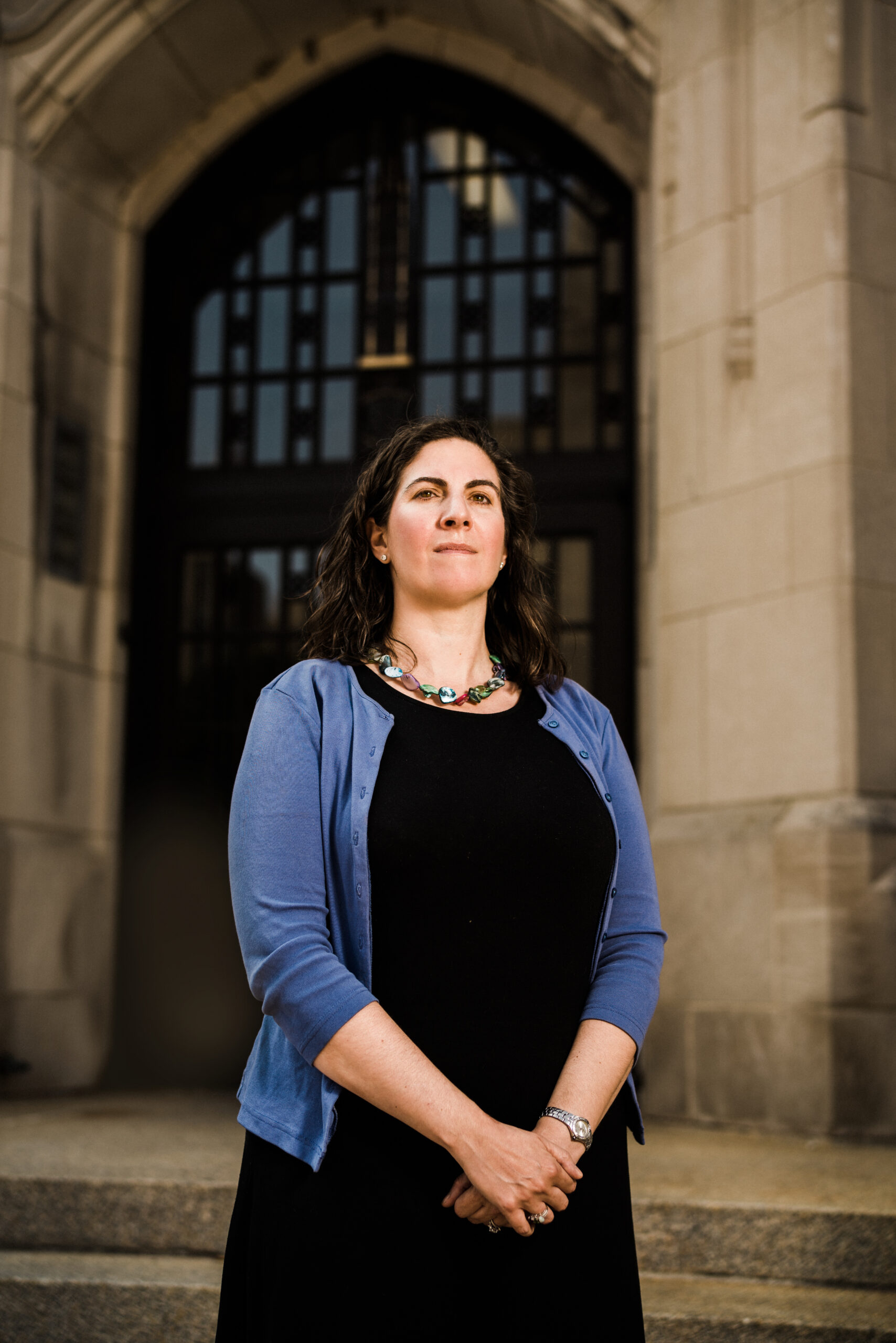Learning Faith

Photo By Chris McIntosh
Learning Faith
Kathleen Corriveau is on a mission to find out how children around the world develop religious beliefs
If you’re a religious person who has been a subject in theology research, don’t take this personally. Kathleen Corriveau says you’re too WEIRD.
That’s not a dig at the devout. WEIRD (Western, Educated, Industrialized, Rich, and Democratic) is the demographic description of the subjects who dominate studies of religious cognition, says Corriveau, an associate professor of applied human development. Those studies are rife with Christians, who are less than one-third of the world’s total population, she says. This leaves a gaping hole in our understanding of how the majority of children in religious families around the world learn their religious beliefs and practices: stereotypes they hold about their own and other religious groups; how such stereotypes influence their interactions with people; and how they juggle their understanding of the supernatural with what they learn about science.
A global problem takes a global solution, and Corriveau is part of an ambitious one.
She and Rebekah Richert of the University of California, Riverside have received the second-largest grant ever from the John Templeton Foundation—$10 million over five years—to build a worldwide network of scholars to study those questions and how generations transmit and receive religious belief.
The Developing Belief Network is not the first such world-spanning collaboration in psychology research. “But we believe ours may be the first that truly allows for the study of diverse cultures using behavioral measures,” says Corriveau, who spoke with BU Wheelock about the project.
BU Wheelock: Why is this research necessary?
Corriveau: In psychology, there is a long history of making global inferences from samples of convenience. One recent paper reviewing developmental psychology studies found that less than 3 percent of participants came from South America, Africa, and Asia—which contain almost 85 percent of the world population. So our hope is to include scholars in the network and participants in our field sites that will allow us to explore what is culturally unique about belief formation and what is more universal. We think that by understanding the diversity of how young children are growing up, that will help to elucidate all of the common experiences that unite rather than divide us.
How many researchers do you hope the Developing Belief Network will have?
We are planning to keep the network somewhat small, around 10 to 20 researchers [at] at least 10 to 12 sites. We were amazed by the interest, especially in the middle of a pandemic. We are not yet sure which countries will be included, but ideally, we would like to include researchers and countries that highlight cultural and religious diversity while allowing for theoretically rich comparisons.
How many subjects do you hope to study?
The number of participants will be somewhat dependent on the field sites chosen. Ideally, we hope to include about 100 families per field site, which we will study for three years. We are planning to pool the data for analysis purposes.
Why study children and religious beliefs?
Many concepts in religion cannot be observed through firsthand observation. The same is true in science; just look at how we’ve modified our behavior based on a virus none of us can see without a microscope. So we’re very interested in how these concepts are discussed with children.
Given that we are hoping to capture diversity in belief formation across a variety of cultures, it is very likely that we will include participants who might identify as atheist or humanist. Indeed, in research we recently completed in Iran, China, and the US, we were able to include families in all countries who identified as secular.
Are there particular faith traditions that you hope to include in the network’s research?
Yes, the vast majority of research exploring the development of religious cognition has focused on Judeo-Christian beliefs, and too often does not include other religions. So we are hoping to include participants from a diverse sample, including monotheistic and pantheistic religions, as well as other cultures with a variety of supernatural and spiritual beliefs. Definitely Muslim, Hindu, Buddhist, but then also indigenous communities with a variety of spiritual practices, such as the Shuar in Peru or the Maya in Mexico.
What methodologies will the studies use?
Our grant timeline is structured such that the first year is set aside to have conversations across the network to decide on a shared methodology. For that reason, we don’t have a set design yet. In general, we’re hoping to include measures that have been shown to be important in social cognitive development, such as children’s developing understanding of mental states (for humans, as well as supernatural entities) and children’s developing executive functioning abilities.
We’re also imagining we will have some controlled experiments and some natural language samples to explore subtle differences in the language around how natural and supernatural entities are discussed. For example, adults often include what are called “modulations of assertion” when talking about supernatural entities, like saying, “I believe in God,” but these are rarely included when talking about natural entities, like saying, “I believe in germs.”